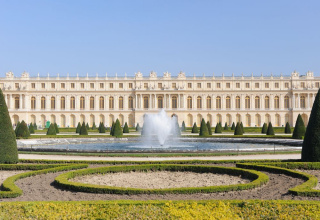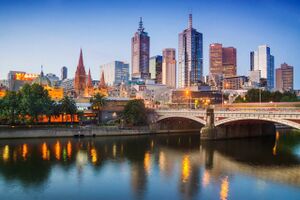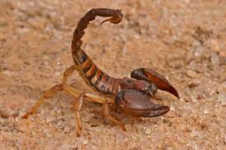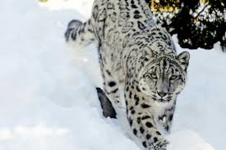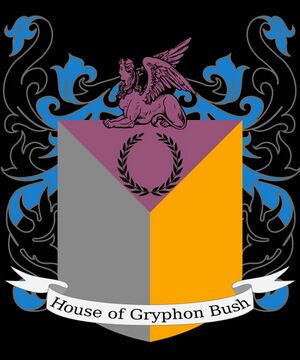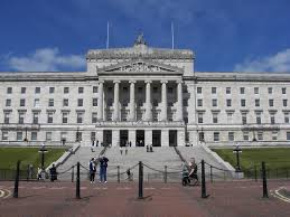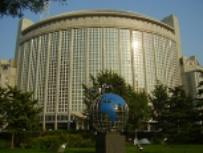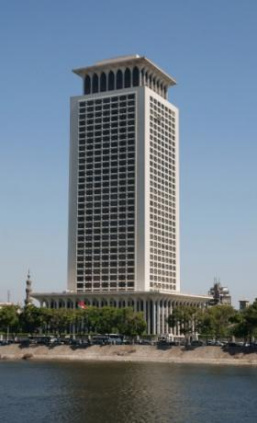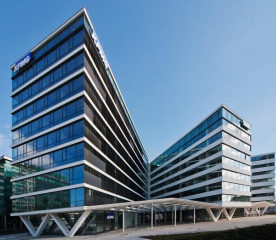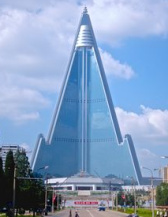West Phoenicia
This article is incomplete because it is pending further input from participants, or it is a work-in-progress by one author. Please comment on this article's talk page to share your input, comments and questions. Note: To contribute to this article, you may need to seek help from the author(s) of this page. |
Empire of Magnus Phoenicia | |
|---|---|
| Motto: Deo et patriae (For God and Country) | |
| Anthem: "West Phoenicia in our hearts!" | |
 | |
| Capital and largest city | Melbourne-Haven |
| Official languages | English, West Phoenician, Magnus Phoenician |
| Ethnic groups (2020) |
|
| Religion |
|
| Demonym(s) | Magnus Phoenician |
| Government | Federal Parliamentary Constitutional Monarchy |
• Monarch | Emperor Glenton Gryphon-Bush II |
• Prime Minister | Countess Tia High |
• Deputy Prime Minister | Aaron Airè |
| Legislature | Parliament |
| Senate | |
| House of Representatives | |
| Sovereign State | |
• Founding of Greater Phoenicia | January 1130 |
• West Phoenicia Independence from Greater Phoenicia | 26th January 1586 |
• Unification with Greater Phoenicia | 2020 |
| Area | |
• | 783,356 km2 (302,455 sq mi) |
| Population | |
• 2023 estimate | 110 million |
| GDP (nominal) | 2023 estimate |
• Total | $6 trillion |
• Per capita | 55,000 |
| Gini | 35.6 medium |
| Currency | The Ba'al |
| Date format | dd-mm-yyyy |
| Driving side | right |
| Calling code | 03 |
| Internet TLD | .wp |
Magnus Phoenicia officially Empire of West Phoenicia formely West Phoenicia is a sovereign country located on the continent of Laurentia
Magnus Phoenicia covers 783,356 km2 with an estimated population of 110 million.
Magnus Phoenicia consists of 39 City-states and 1 Territory. In addition to a small chain of islands and the North Cartier Island Marine Reserve.
The nation is surrounded by the Panthlassa Ocean to the west.
The neighbouring country to the north is Libervalley. To the east is The Republic of Federated Provinces of China. To the south lies The Commonwealth of Germania-Saxon and The Holy State of Ferlik
Mqgnus Phoenicia is a Federal Parliamentary Constitutional Monarchy. The current Monarch is Emperor Glenton Gryphon-Bush II who has ruled since 2010. The royal family hold almost deity-like status by its citizens
Magnus Phoenicia's capital and largest city is Melbourne-Haven.
Melbourne-Haven is home to the National government, The Supreme Court of Magnus Phoenicia and the Imperial Palace.
History
Prehistoric History
Archaeologists have theorised through multiple archaeological site excavations, human habitation of the area now known as West Phoenicia sprung up 8000 years ago during the Neolithic period.
Five distinct ethnic groups migrated into the region from at least 8000 years ago.
The five groups consisted of the Mermania, Deserti, Dweorg, Dryadi and The Babalites. The distinct ethnic groups left their mark through cities, paintings, artifacts and written and oral histories.
Classical Era (600 BC-476 AD)
The Middle Ages (476AD -A.D. 1450
Members of a noble Babalite city family, the Imperium family, rallied other Babalite cities, alongside, Dweorgs, Mermania and Dryadi tribes to avoid being conquered from foreign invaders who allied with the Deserti people.
By 1130, The House of Imperium became the founding royal house to rule over a unified country they named; The Empire of Greater Phoenicia.
Early Modern Era (1450-1750)
Modern Era (1750-Present)
Geography
The Empire of West Phoenicia is a sovereign country located on the continent of Lansi
West Phoenicia covers 783,356 km2 with an estimated population of 110 million.
West Phoenicia consists of 33 states, 5 Territories and a semiautonomous Duchy, in addition to a small chain of islands and the North Cartier Island Marine Reserve.
North Cartier Island is a marine reserve and wetland roughly 200kms in size, located north of West Phoenicia. It is used by several aquatic species, birds and turtles where scientists observe breeding and conduct research. An observation station is located on the island to monitor the fauna in their natural habitat.
The nation is surrounded by the Valtava Ocean to the east, and the Sarasta Ocean to the west. The neighbouring country to the south is Northdan and Os Adoradores de Deus
West Phoenicia has rich fertile land in the north, south and east of the nation. The fertile land is used by agricultural industries to grow tobacco, cotton and tea.
Gold, silver, emerald and sapphire mines are located in the western regions of the nation along the Mt Ethabaal mountain ranges.
The nations main oil fields are also located in the western regions.
Melbourne-Haven; the West Phoenician capital is located on the east coast. A thriving metropolis of large man-made lakes, towering skylines, fancy boutiques, the largest zoo in West Phoenicia and is also the prime centre of government, trade and commerce.
Climate
West Phoenicia has a variety of climates due to its large geographical size.
West coast city-states have mild humid subtropical climates; except for some of the higher elevations in the Mt Ethabaal mountain ranges.
During Autumn and Winter, these mountain ranges experience heavy rainfall without the chill factor.
Throughout Summer, Western city-states transform into a hot arid and semi-arid climate with very little rainfall in the northwest. The southwest coastal portions of the Western city-states have a Mediterranean climate with mild wet winters and hot dry summers.
Northern regions experience more of a mountain temperate climate or a humid continental climate due to its cooler temperatures.
The east and south-east city-states have a more cool temperate climate with large amounts of rainfall especially in Winter and Spring due to large areas being under an oceanic climate.
Summers in West Phoenicia is generally hot and humid, with most of the city-states averaging a high of around 30 degrees during the Summer months.
Winters tend to be mild to very cold for those on the east coast, increasing in coolness at higher elevations.
Mild winter conditions with an early morning chill but mild days tend to occur for the western regions.
East coast city-states tend to have high annual rainfall between April to September. While annual rainfall for the Western city-states tends to occur from April to August.
Fauna
The Empire of West Phoenicia is home to an extensive variety of fauna; including large varieties of introduced species.
Around 200 species of mammals represent the fauna of West Phoenicia. There are over 50 species of birds and more than 100 known species of insects. West Phoenicia also is home to 30 known reptiles, 20 amphibians and 100 fish species.
Among animals that can be found in West Phoenicia include; Nova Texwesternia Buffalo, Polytheisa Wolf, Red Scorpion, Nova Aegyptus Taipan, Forbidden Marsh Alligator, Lower Bilby, Colony Devil, Lyrebird, Pigeon, Cinnamon Bear, Hedgehogs, The Colony Snow Leopard, Badger, Albus Doves, Birds of Paradise, Seahorses, Phoenician Monarch Butterfly, Mantis, Deception Bay Giant Tortoise, Nova Aegyptus Cobras and Golden Poison dart frogs breeds.
West Phoenician introduced species include; Jacksonia Plains Zebra, Wild Ass, Onyx, Titania Spider Monkey, West Phoenician Lowlands Giraffe, Okapi, Jackel, Antebellum Flamingo, Cassowary, Agape Hummingbird, Yule Island Green Tree Snake, Honeybees.
The oceans adjacent to West Phoenicia are filled with a wide array of fish and sea life mammals that include; West Phoenician Tiger Shark, Southern Whale, Swordfish, West Phoenician Hammerhead Sharks and Beluga.
West Phoenicia has over 100 zoological gardens of various sizes. The largest being the West Phoenicia National and the International Zoo.
Fifty-three government-protected wildlife reserves are spread throughout the nation.
The largest reserve is located in Polytheisa Africana. Restricted to the public, the reserves allow animals to live in their natural habitats while at the same time allowing breeding programs and a reintroduction to the wild programs.
In addition, West Phoenicia houses Aquariums, Sea World Centres, Reptile Houses, Bird Sanctuaries and Butterfly Houses.
Monarchy
Politics and Government
Ministry of Homeland Affairs
The Ministry of Homeland Affairs is the government interior executive ministry created with the responsibility for national security and law enforcement, emergency management, border control, immigration, refugees, citizenship, multicultural affairs, cybersecurity, and disaster prevention.
Ministry of Foreign Affairs
The West Phoenician Ministry of Foreign Affairs is responsible for foreign policy, foreign relations, foreign aid and consular services. The ministry advises the royal family and the Prime Minister, administers diplomatic missions and negotiates international treaties.
West Phoenicia has embassies and missions across the globe.
Ministry of Justice
The Ministry of Justice is the West Phoenician national government executive ministry created with the responsibility for Justice, Corrections and Law and Order.
Ministry of Citizen Services
The Ministry of Citizen Services is responsible for delivering a range of welfare, and support payments as well as other services to eligible West Phoenician citizens.
It delivers social security services through government programs and brands through five key ministries.
Ministry of Defence
The West Phoenician Ministry of Defence is the executive ministry within the the West Phoenician government created with the responsibility to defend The Empire of West Phoenicia national interests through their government civillian agencies and military service branches.
The Empire of West Phoenicia has an impressive military comprising of;
- West Phoenicia Armed Forces
- West Phoenicia Naval Ocean Forces
- West Phoenician Air Force
- West Phoenician Imperial Guard
Ministry of Trade
The West Phoenician Ministry of Trade is a government department in the The Empire of West Phoenicia that is responsible for trade, commerce and investment.
Ministry of Infrastructure, Transport and Energy
The West Phoenician Ministry of Infrastructure, Transport and Energy is a government department in the The Empire of West Phoenicia that is responsible for national infrastructure building and maintenance, mass public transportation, the nation energy grids and resources. It also deals with rural and regional development, population policy, and cities
Energy
West Phoencia's major utilities include a collection of brown-coal-fired power stations located in the western regions that supply energy to the northern, eastern and western regions of West Phoencia.
Southern regions of West Phoenicia rely 50% on brown coal and 50% on alternative energy schemes such as wind farms and solar power. Alternative energy schemes are implemented to reduce the carbon emission and reliance on brown coal.
Water
West Phoenician water infrastructure includes a series of dams and reservoirs, predominantly in Central West Phoenicia that holds and collect water for much of the nation.
The water collected is of a very high quality and requires little chlorination treatment, giving the water a pristine pure taste.
The West Phoencia Water Grid consists of a number of new connections and pipelines being built across the nation. This allows water to be moved around West Phoencia to where it is needed most and reduces the impact of localized droughts in an era thought to be influenced by climate change.
In the city-states of New Rome and New Egypt vast mega modern aqueducts exists to assist in non city areas containing fresh water.
Transport
The West Phoenician road network services the population centres, with highways radiating from Melbourne-Haven to all major cities and rural centres with secondary roads interconnecting the highways to each other.
Public Transport All populated capital cities and outlining suburbs have an extensive train, trams and bus services run by private operators. Train and tram services in all major cities are run 24 hours a day.
Rural areas are connected by public and private bus services and run 24 hours a day.
Airlines
West Phoenicia first airline was established in the early 1920s.
West Phoenicia has many airports both for passengers and freight transport. Each city-state has at least one regional airport.
The West Phoenician airline industry is administered by the Minister of Transportation, Aviation and Innovation. The current minister is James Chapperaux. He is responsible for aviation, security and saferty standards throughout the empire of the airline industry.
The West Phoenician Civil Aviation Authority while independent, report to the minister in issues from licensing pilots, registering aircraft and overseeing promoting air safety and travel.
West Phoenicia Air and Phoenicia Anemoi are the two main airlines servicing both international and domestic passengers.
The busiest airports in West Phoenicia are:
- Melbourne-Haven International- Jacksonia
- Melbourne-Haven Domestic - Jacksonia
- Olympia Hills Airport
- Agape Faith Airport
- Olympia Hills Domestic
- Nova Texwesternia Regional Airport
Ministry of Health
The West Phoenician Ministry of Health administers national health policy for both public and private hospitals across the Empire.
The national government is responsible for ApolloIsis Aid; the National Public Health Care universal healthcare system that is available to all citizens via a tax they pay annually. ApolloIsis gives citizens access to public healthcare, public hospitals, affordable pharmasecutals and other health services.
City-state governments administer elements of health care within their jurisdictions; such as the operation of public hospitals, ambulance services, outpatient services, alternative medicine and other health services like dentists, dietitians, chiropractors and podiatrists.
Private Health is available for those citizens who wish to pay for a higher quality of healthcare. Private health helps avoid waiting lists, allows a choice of doctor and access to a private platinum hospital. It also includes other benefits such as one's own room, personal nurse and a high-class menu that caters for your choice of meals.
Ministry of Education
The West Phoenician Ministry of Education is a government department that is responsible for national education policies for public, private, religious and homeschooling institutions.
Ministry of Religion
The Ministry of Faith is a religious agency established by the West Phoenician government that is regulated by The True Path State Church and United Pagan Faiths.
Religions not banned have representatives and departments within the ministry.
The Ministry of Faith has offices located throughout the empire. The two main headquarters are located in the city-states of Agape and Selene Valley.
The Ministry of Faith's role is to ensure correct religious teaching of approved religious texts. The ministry also promotes proper teaching of religion and worship, care for the needs of religious citizens, investigate claims of heresy and banned religious teachings in West Phoenicia.
The Ministry also oversees the administration duties of The Inquisition Tribunal; a court system designed to punish those who practise heresy and the authority to exile those practising banned religions.
Ministry of Sports
The West Phoenician Ministry of Sport is a government department responsibility for the regulation and funding of sports, sports medicine and education, particularly at a professional level.
The minister is responsible for the administration of, Sports West Phoenicia, West Phoenician Institute of Sport and West Phoenician Olympic Council.
All three organisations work to ensure West Phoenicia can send the best athletes to international events.
Ministry of Culture
The Ministry of Culture is charged with overseeing and stimulating the cultural work in West Phoenicia and preserving its cultural and artistic heritage.
The ministry encompasses cultural policy and activities in the country, including managing national museums and monuments; promoting and protecting the arts (including censorship of visual, folk, theatrical, musical, dance, architectural, literary, televisual and cinematographic works); and managing the national archives and regional cultural centres.
Music
West Phoenicians are passionate about music. It has been a part of their culture since the country came into existence.
Archaeologists predate music being a form of entertainment in the region for well over 5000 years.
Evidence discovered in Mermania cave artefacts, show conch shells as instruments and cave painting depicts music as a form of celebration.
Pan; a Greek deity associated with rustic music was one of the first musical deity absorbed to the West Phoenician Pantheon when the region had an influx of Greek settlers. Musicians are known to call on him for a blessing for a successful performance.
Jazz, Southern Gospel, Bubble-Gum Pop, Classic Rock and Country are the most popular music genres.
Opera is also a popular choice of music for members of the aristocracy.
Rap and Heavy metal is banned in the Holy city-state of Agape by orders of Pontifex Angelika I who has deemed it the Devils music. Other city-states have followed suit with many cities and towns undergoing yearly burnings of rap music and heavy metal.
Arts
West Phoenicia has a thriving arts culture which dates back thousands of years before West Phoenicia became a nation.
Early cave paitings discovered in northern West Phoenicia, display pictures of boat making and sailing. The cave painting have been confirmed by the University of Jacksonia archaeology department to have been drawn over 5000 years ago by members of the Mermania tribes.
The art culture is celebrated across all the city-states in West Phoenicia.
Poetry, music, paintings and sculptures are some of the many forms of art that thrives.
The city-state of Ptolemaic Haven houses the Great Library of West Phoenicia, one of the Great Wonders of West Phoenicia that attracts thousands of tourists each year.
The Great library of West Phoenicia stores over 10 million books, recordings, journals and other works of art, some of which predate the nation's of West Phoenicia and their predecessors The Empire of Greater Phoenicia.
Cuisine
West Phoenicians are passionate about great quality fresh food.
Food is a common method for friends and family to come together; from simple meals to elaborate celebrations.
Early tribes in the region subsisted on a simple hunter-gatherer diet of native fauna and flora.
Seafood has played a big part for coastal city-states cuisine. Fish, crab and lobster are popular sources of food in their diets.
A 2019 West Phoenicia Food Network poll had the top three West Phoenician seafood dishes being fish stew, crab cakes and lobster chowder.
Western and inner city-states not connected to the coast are known for hardier meals produced from beef, supplied from Nova Texas and Fort Blackfoot.
In addition pork and chicken play big parts in regional cuisine. These city-states also favour heavy carbohydrate produce such as bread, grains and potatoes.
Roasted peacock and pheasant are extremely popular meats in city-states with a high proportion of members of the aristocracy.
Fresh fruit, vegetables and herbs are plentiful due to the abundance of farms throughout the nation. Spices were introduced at a far later stage, and while grown in popularity, are largely ignored by older West Phoenicians who prefer traditional tastes.
Since the 1970's there has been an explosion of West Phoenician infusion due to the arrival of other cultures who introduced their cuisines.
Italian, Asian, African and over 300 different food cultures are represented in bistros, cafes, restaurants and taverns.
From the late 1990s, a small percentage of West Phoenicians turned to a vegetarian based diet, opting out of the popular meat dishes. Veganism has spun out of that movement with West Phoenicians removing all animal products from their diet. However less than 5% of the population identity as vegan.
West Phoenicians are renowned for their sweet tooths. Shops and cafes selling chocolates, cakes and biscuits can be seen on every street corner in every city and town.
Many of these sweets include honey due to numerous beehive farms.
Peaches, apples and oranges feature in West Phoenician desserts due to the popularity of these fruits which are grown throughout the nation. The peach is the national fruit of the nation.
Peach cobbler and Baked Apples are considered the national sweet dishes of West Phoenicia. Both are a common sight in dessert cooking competitions.
Fruitcake, scones and finger sandwiches are common sights in all high tea establishments. High tea is an extremely popular event throughout West Phoenicia; with tea room establishments overall dealing with a million customers per day.
Fashion
West Phoenicia has a long tradition of fashion, dating back to the countries independence.
The West Phoenician fashion industry is a billion dollar industry.
West Phoenicia is unique in that each city-states pays homage to it's own culture and history; through fashion, cosmetic appearance, hairstyles and adornments.
West Phoenician fashion styles are extreme, gaudy, avant-garde haute couture that is seen year round on West Phoenician catwalks.
Notably fashions that one can observe within West Phoenicia include; Cosplay, Harajuku, Victorian, Retro-Vintage, Bohemian, Tudorian, Androgyny, Ancient Egyptian and Greek attire.
All fashions meld and coexist alongside, business suits and modern and post modern attire.
Many West Phoenicians embrace the fashion of their culture all year long. Others will wear professional work attire during times of work, while experimenting during their personal time.
West Phoenicia known for its mix-match of different styles and genres, and there is no single sought-after brand that can consistently appeal to all fashion groups.


